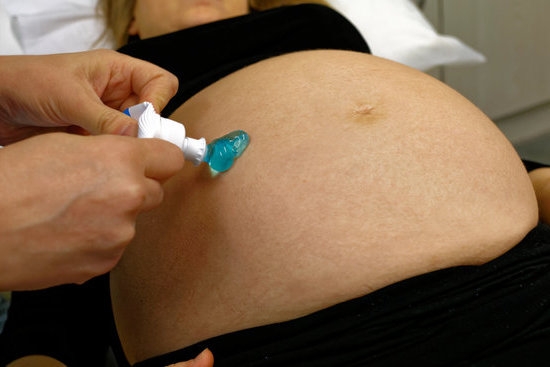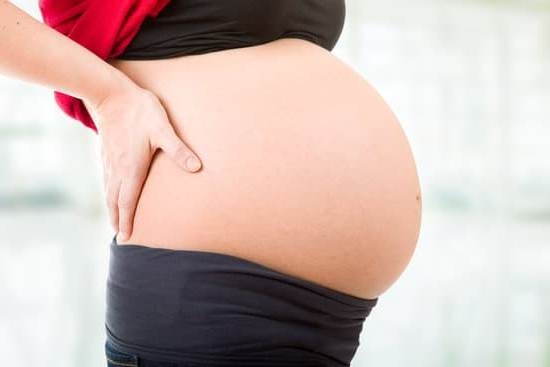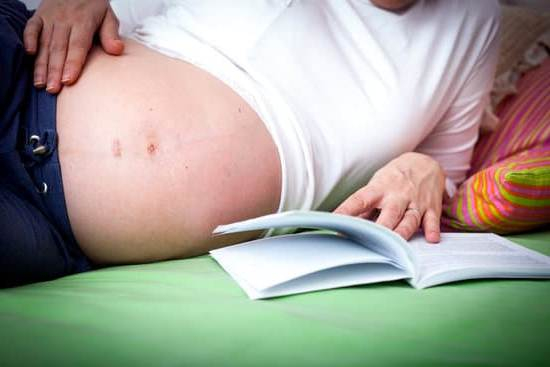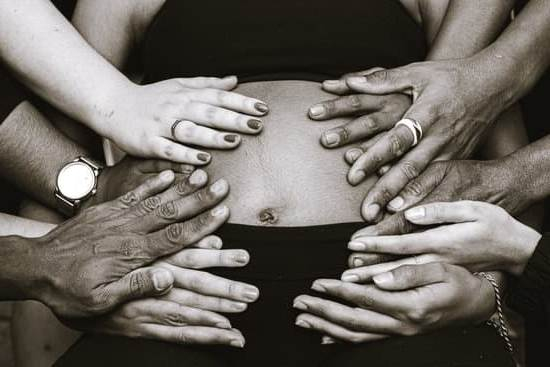Experiencing breast pain is a common symptom during early pregnancy, and many women may wonder, “what part of the breast hurts in early pregnancy?” This discomfort can be attributed to various changes happening within the body and is often a sign of the body preparing for breastfeeding. Understanding the source of this pain is important for expecting mothers to alleviate any concerns they may have.
During the initial stages of pregnancy, hormonal fluctuations lead to significant changes in the breasts, causing them to become tender and sensitive. As a result, it is crucial to comprehend the anatomy of the breast and how pregnancy impacts each part.
Additionally, different types of breast pain, including nipple sensitivity and throbbing discomfort, can indicate various factors related to early pregnancy. Therefore, this article seeks to provide an in-depth exploration of this topic while offering guidance on managing this common distress.
Through this article, readers will gain valuable insights into addressing their concerns about breast pain in early pregnancy. It will also shed light on identifying alarm symptoms that require medical attention and offer coping mechanisms for managing discomfort. Moreover, personal stories from individuals who have navigated through similar experiences will provide a relatable perspective for those facing these challenges themselves.
Understanding the Anatomy of the Breast
During pregnancy, the breasts undergo significant changes as they prepare for milk production and breastfeeding. Understanding the anatomy of the breast is crucial in comprehending the various discomforts experienced during this time. The breast is composed of different parts, each with its own role and susceptibility to pregnancy-related changes.
The main parts of the breast include the:
- Mammary Glands: These are responsible for milk production and can undergo significant enlargement and tenderness during pregnancy.
- Nipple: The nipple becomes more sensitive and may experience pain or discomfort due to hormonal fluctuations.
- Areola: This area darkens in color and may also become more sensitive as a result of increased blood flow.
Each part of the breast can be affected differently during early pregnancy, leading to various types of discomfort such as soreness, tenderness, or pain. It’s important to recognize these changes as normal aspects of pregnancy rather than indicators of a serious health issue.
The mammary glands in particular may become larger, causing a feeling of fullness or heaviness. This expansion can lead to a sensation of dull ache or heaviness in the breasts. Additionally, hormonal changes can cause increased blood flow to these areas, making them more sensitive overall. These physiological adjustments often contribute to what part of the breast hurts in early pregnancy and are typically considered normal occurrences.
Nipple Pain and Sensitivity
During early pregnancy, many women experience nipple pain and sensitivity. This discomfort is often one of the first signs of pregnancy and can be attributed to the hormonal changes occurring in the body. The increased levels of estrogen and progesterone can lead to heightened sensitivity in the breasts, particularly around the nipples. This sensation can range from a mild tenderness to more acute pain.
The areola, which is the darker area surrounding the nipple, may also undergo changes during this time. It may become larger and darker in color, again due to the hormonal shifts. These physical alterations are normal and typically subside as the pregnancy progresses.
Many women wonder what part of the breast hurts in early pregnancy, and it’s important to note that while nipple pain and sensitivity are common symptoms, other areas of the breast may also experience discomfort. The entire breast tissue can become tender and swollen as a result of pregnancy hormones, not just limited to the nipples or areolas.
Women experiencing nipple pain and sensitivity during early pregnancy should consider investing in comfortable bras that provide ample support without constricting or causing additional discomfort. It is essential to prioritize self-care during this time and seek medical advice if any concerns arise regarding breast pain or changes.
| Aspect | Information |
|---|---|
| Common Symptom | Nipple pain and sensitivity |
| Hormonal Changes | Elevated estrogen and progesterone levels |
| Coping Mechanisms | Comfortable bras for support; medical advice if needed |
Types of Breast Pain
During early pregnancy, many women experience different types of breast pain that can be indicative of various factors. Understanding the types of breast pain can provide insight into what the body may be going through during this crucial time.
Sharp Pain
Some women may experience sharp, shooting pains in their breasts during early pregnancy. This type of pain is often attributed to the hormonal changes and increased blood flow to the breasts. It can also be associated with the expansion of the milk ducts and the growth of mammary tissue in preparation for breastfeeding.
Dull Ache
On the other hand, some individuals may report a dull, persistent ache in their breasts. This type of pain is typically caused by the enlargement and swelling of the breasts as they prepare for lactation. Additionally, hormonal fluctuations can contribute to this sensation of heaviness or discomfort.
Throbbing Sensation
A throbbing sensation in the breasts is also common during early pregnancy. This pulsating feeling may be linked to increased blood flow and heightened sensitivity in the breast tissue. It can occur intermittently throughout the day and may vary in intensity.
Understanding these different types of breast pain in early pregnancy can help individuals recognize what their bodies are experiencing. While these symptoms are generally considered normal, it’s important for individuals to pay attention to any unusual or concerning changes and consult a healthcare provider if needed.
Addressing Concerns and Alarm Symptoms
During early pregnancy, it is common for women to experience breast pain or discomfort. However, it is important to be aware of certain concerns and alarm symptoms that may arise in relation to breast pain during this time. Understanding these potential red flags can help individuals seek appropriate medical attention if necessary.
When to Be Concerned
While some level of breast tenderness is typical during early pregnancy due to hormonal changes, there are certain symptoms that may indicate a more serious issue. If the breast pain is accompanied by unusual lumps, redness, or warmth in the breast tissue, it could be a sign of infection or inflammation. Additionally, if the pain becomes increasingly severe and does not subside with home remedies or changes in clothing choices, it may warrant further investigation.
Seeking Medical Advice
If you experience any concerning symptoms related to breast pain during early pregnancy, it is advisable to consult a healthcare provider promptly. Your doctor can perform a physical examination and order any necessary diagnostic tests to determine the underlying cause of the discomfort. It is important not to dismiss persistent or worrisome breast pain as simply a normal part of pregnancy without seeking professional input.
Importance of Regular Check-Ups
Regular prenatal check-ups are essential during pregnancy, and discussing any concerns about breast pain with your healthcare provider can provide reassurance and guidance. These appointments allow for ongoing monitoring of your overall health and well-being, ensuring that any potential issues are addressed promptly. Open communication with your doctor about your symptoms helps in maintaining good maternal and fetal health throughout the duration of the pregnancy.
By being knowledgeable about when to be concerned regarding breast pain in early pregnancy and seeking timely professional help when needed, individuals can ensure their own well-being as well as that of their unborn child.
Coping Mechanisms
During early pregnancy, it is not uncommon for women to experience breast pain or discomfort. This can be attributed to the hormonal changes taking place in the body, as well as the physical adjustments that the breasts undergo in preparation for breastfeeding. Understanding how to cope with this symptom can greatly improve a woman’s overall comfort during this time.
Here are some coping mechanisms that can help alleviate breast pain in early pregnancy:
- Invest in a comfortable and supportive bra: Finding a bra that provides adequate support and does not constrict the breasts can make a significant difference in managing breast pain. Look for bras specifically designed for pregnant women, with features such as wider straps and softer fabrics.
- Apply warm or cold compresses: Using a warm compress can help soothe sore muscles and alleviate discomfort, while a cold compress may help reduce inflammation and swelling in the breasts.
- Practice gentle massage: Gently massaging the breasts with a moisturizing lotion or oil can provide relief from tenderness. Be sure to use light pressure and avoid any vigorous movements.
It is important for women experiencing breast pain in early pregnancy to remember that they are not alone in this journey. Seeking support from healthcare providers, friends, or online communities can offer valuable insights and reassurance during this time of change. It is essential to prioritize self-care and seek professional assistance if the breast pain becomes severe or is accompanied by other concerning symptoms.
These coping mechanisms aim to provide practical methods for managing breast pain during early pregnancy, ultimately promoting comfort and well-being for expectant mothers.
Seeking Professional Help
Breast pain can be a common symptom experienced by women in early pregnancy, and it is important to understand the different aspects of this discomfort. When seeking professional help for breast pain in early pregnancy, it is essential to be aware of what part of the breast hurts and how it can indicate various factors related to pregnancy.
During pregnancy, the breasts undergo significant changes due to hormonal fluctuations and increased blood flow. This can result in tenderness, swelling, and discomfort in different parts of the breast. The most common areas where women experience pain are the nipples, areolas, and the upper outer quadrant of the breasts. As a result, women may wonder what part of the breast hurts in early pregnancy and how it may be connected to their overall health during this crucial time.
Understanding which part of the breast hurts during early pregnancy is essential for seeking appropriate medical advice. Consultation with a healthcare provider can help determine if the pain is normal or if it indicates any underlying issues that need attention. Regular prenatal check-ups also provide an opportunity for healthcare professionals to monitor any changes or concerns related to breast pain and address them accordingly.
It is crucial for pregnant individuals experiencing breast pain to be proactive about seeking professional help if they have any concerns. This not only ensures peace of mind but also promotes overall well-being during this significant period in their lives.
| Part of Breast | Associated Discomfort |
|---|---|
| Nipples | Pain and sensitivity due to hormonal changes |
| Areolas | Tenderness and swelling as a result of increased blood flow |
| Upper Outer Quadrant | Swelling and discomfort from hormonal fluctuations |
Real Experiences
In conclusion, breast pain in early pregnancy is a common and often uncomfortable symptom experienced by many women. Understanding the anatomy of the breast and how it can be affected during pregnancy is crucial in recognizing the various types of breast pain that may occur. Nipple pain and sensitivity are also prevalent, attributed to hormonal changes, and can significantly impact a woman’s comfort during this time.
It is important for individuals experiencing breast pain in early pregnancy to address any concerns or alarm symptoms they may have. While some degree of discomfort is normal, seeking professional help and consulting a healthcare provider when necessary is vital for ensuring both the mother’s and baby’s well-being.
Regular prenatal check-ups can aid in monitoring and managing breast pain, as well as addressing any potential underlying issues. Coping mechanisms such as wearing comfortable bras and clothing options tailored for relief can also alleviate some of the discomfort associated with breast pain.
Real experiences from individuals who have navigated through similar challenges can provide a sense of understanding and empathy for those going through breast pain in early pregnancy. These personal anecdotes offer reassurance, support, and valuable insights into coping strategies that have been effective for others. By sharing these experiences, individuals can feel connected and encouraged as they navigate this aspect of their pregnancy journey.
Frequently Asked Questions
How Do Nipples Look in Early Pregnancy?
During early pregnancy, some women may notice changes in their nipples. This can include darkening of the areolas, increased sensitivity, or the appearance of small bumps on the areolas known as Montgomery tubercles. These changes are often due to hormonal shifts.
Which Part of the Breast Hurts Before Period?
Before a period, it’s common for women to experience breast tenderness and pain in the upper outer quadrant of the breasts. This discomfort is usually caused by hormonal changes that occur during the menstrual cycle, particularly an increase in estrogen and progesterone levels.
What Does Breast Tenderness Feel Like?
Breast tenderness can feel like a dull, heavy, or achy sensation in the breasts. Some women describe it as a feeling of fullness or swelling in the breast tissue. The breasts may also be extra sensitive to touch or pressure during this time. These symptoms typically improve as the menstrual cycle progresses.

Welcome to my fertility blog. This is a space where I will be sharing my experiences as I navigate through the world of fertility treatments, as well as provide information and resources about fertility and pregnancy.





